ANCHORING AND THE PUBLIC PROSECUTOR
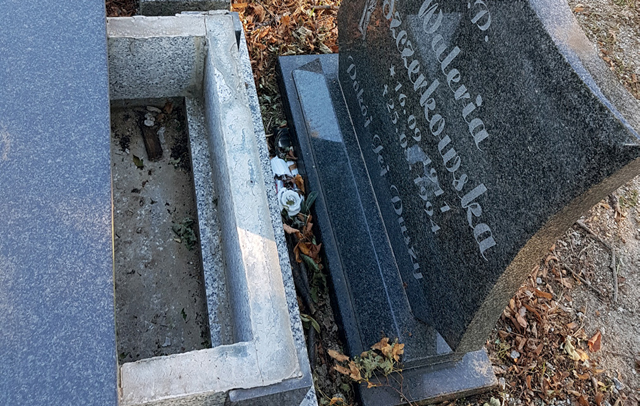
I repeatedly encounter problems with toppled inscription plates. These are structure elements which weigh at least several dozen kilograms and have a high centre of gravity. It is easy for such an element to topple over. It is in no way uncommon for a stone slab to fall on a person and cause injury. A few years ago, there was a fatal accident in Poland – a woman died as a result of injuries on whom one of the inscription plates fell. Therefore, careful consideration should be given to their safe and durable installation.
During the installation of a gravestone it must be borne in mind that it is meant to stand in the cemetery longer than till the end of the warranty period. Therefore, we must make it in a way that will ensure durability for many years. An important element is the anchoring of the inscription plate. Here are the most common mistakes I come across.
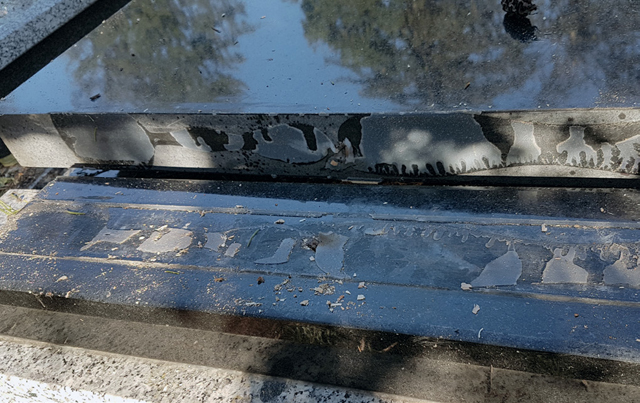
Chemistry alone will not suffice
The mad vanguard of stonemasonry are those who believe that chemistry will ensure long-lasting bonding of two elements, that they can ensure proper technological regime and are able to predict the durability of such bonding. The situation turns out to be lamentable, as after some time the inscription plates topple over.
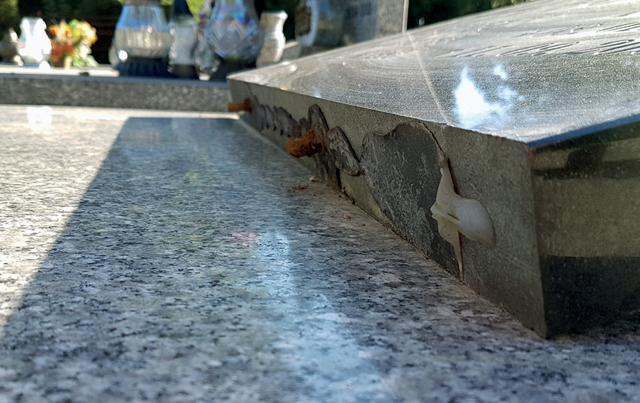
Shallow anchoring
The anchor must be sunk so deep into the stone element as to avoid the rod slipping out of the slab. We see very often that the bar from the inscription slab only protrudes 2 cm and this length is inserted into the mounting socket in the base. Such a shallow insertion will not ensure stability. The depth of the anchorage should be at least 6 cm.
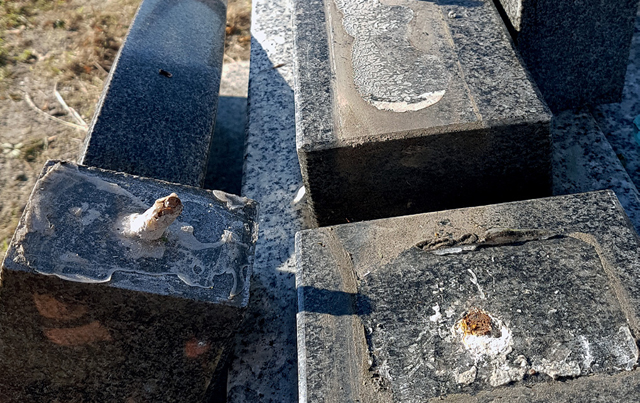
No mortar filling in the socket
The purpose of filling the socket with mortar is to stiffen the shank and seal the hole so that water does not flow into the empty space. Unfortunately, tombstone installers – due to laziness or convenience – often forget to fill the hole. Moisture and temperature fluctuations quickly lead to a collapse of the attic.
Selecting an anchor
It is very common to use anything you find in a junkyard or in the pockets of work trousers as anchors – old rebar, drills, nails and similar items will determine the durability of a gravestone installation. A very common symptom will be the appearance of rust at anchor points. There will also be swelling of the bars due to rusting and destruction of the stone or complete corrosion of the bar, of which only ore dust remains. So make sure you use rust-resistant steel – buying a few suitable pins is not a horrendous expense.
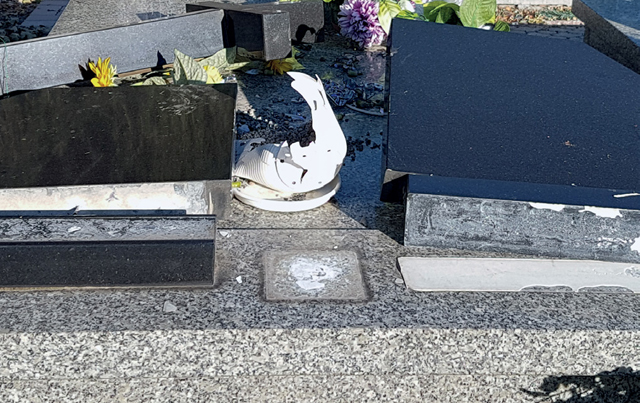
A seemingly simple task, but one that poses problems, nonetheless. Anchoring tombstone parts used to be a standard – nowadays we see an incomprehensible retreat from this custom. Confidence in the use of only chemical connection of the elements often leads stonemasons into trouble. Is it so expensive to drill a hole and install a pin?
The pictures show the effect of a storm which broke out in Jaworzyna Śląska in early September this year. The overturned inscription plates revealed all the above described examples of faults in the stonemasonry. Luckily, no one went for a walk to the cemetery during the storm. However, if one of the poorly fixed slabs fell down on some another occasion, causing an accident in which a person would be injured would no longer do without some investigation the public prosecutor. An investigation that would undoubtedly lead to identification of those responsible for the negligent installation.
Source: Kurier kamieniarski
Author: Michał Firlej | Published: 17.11.2020
